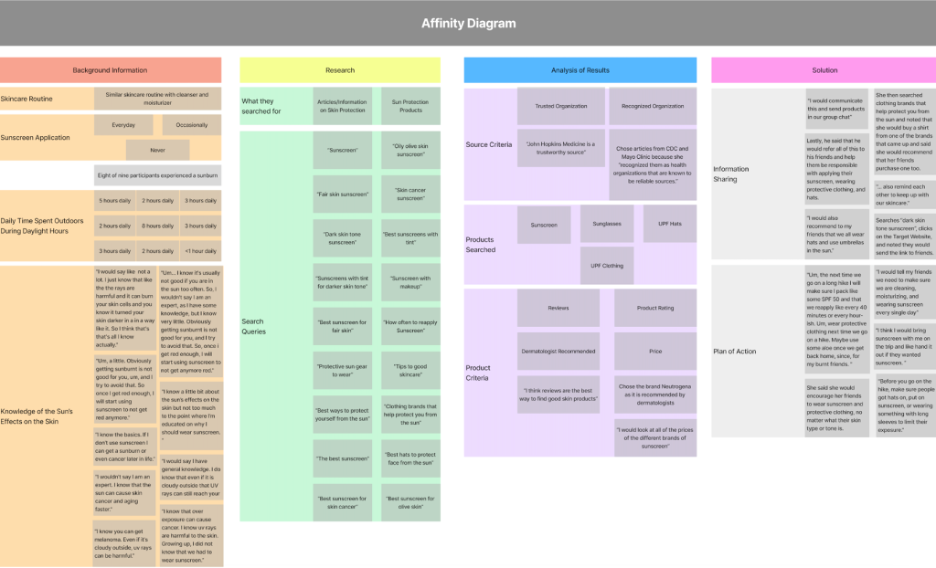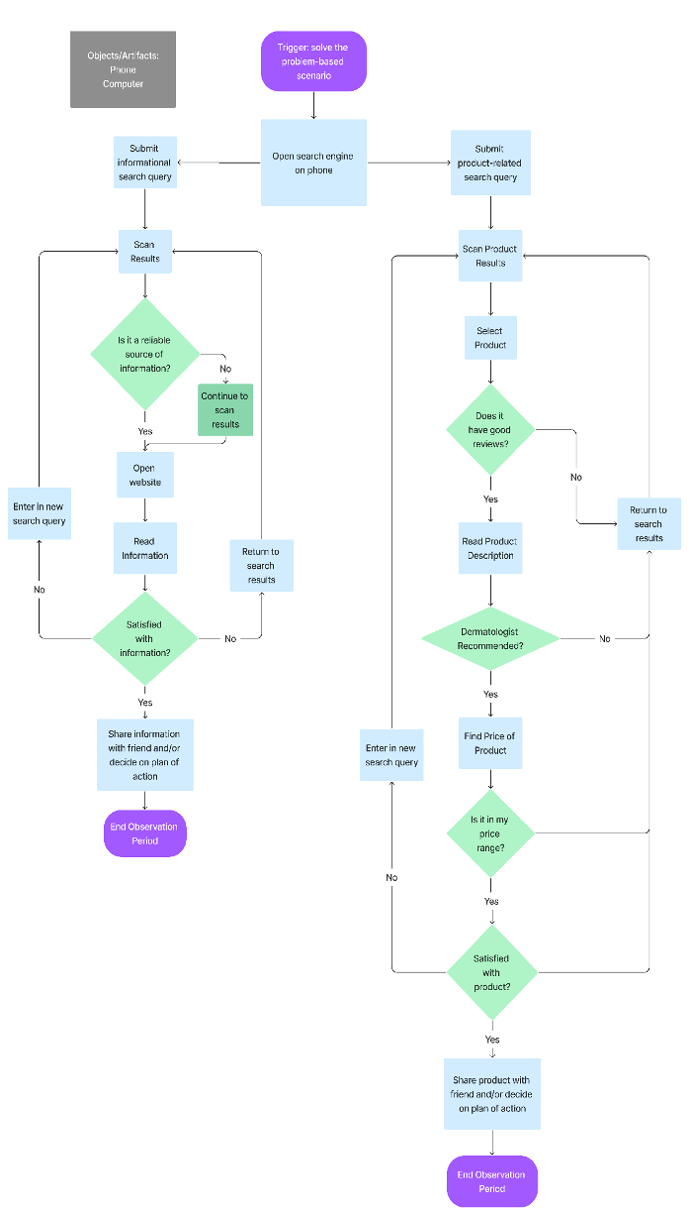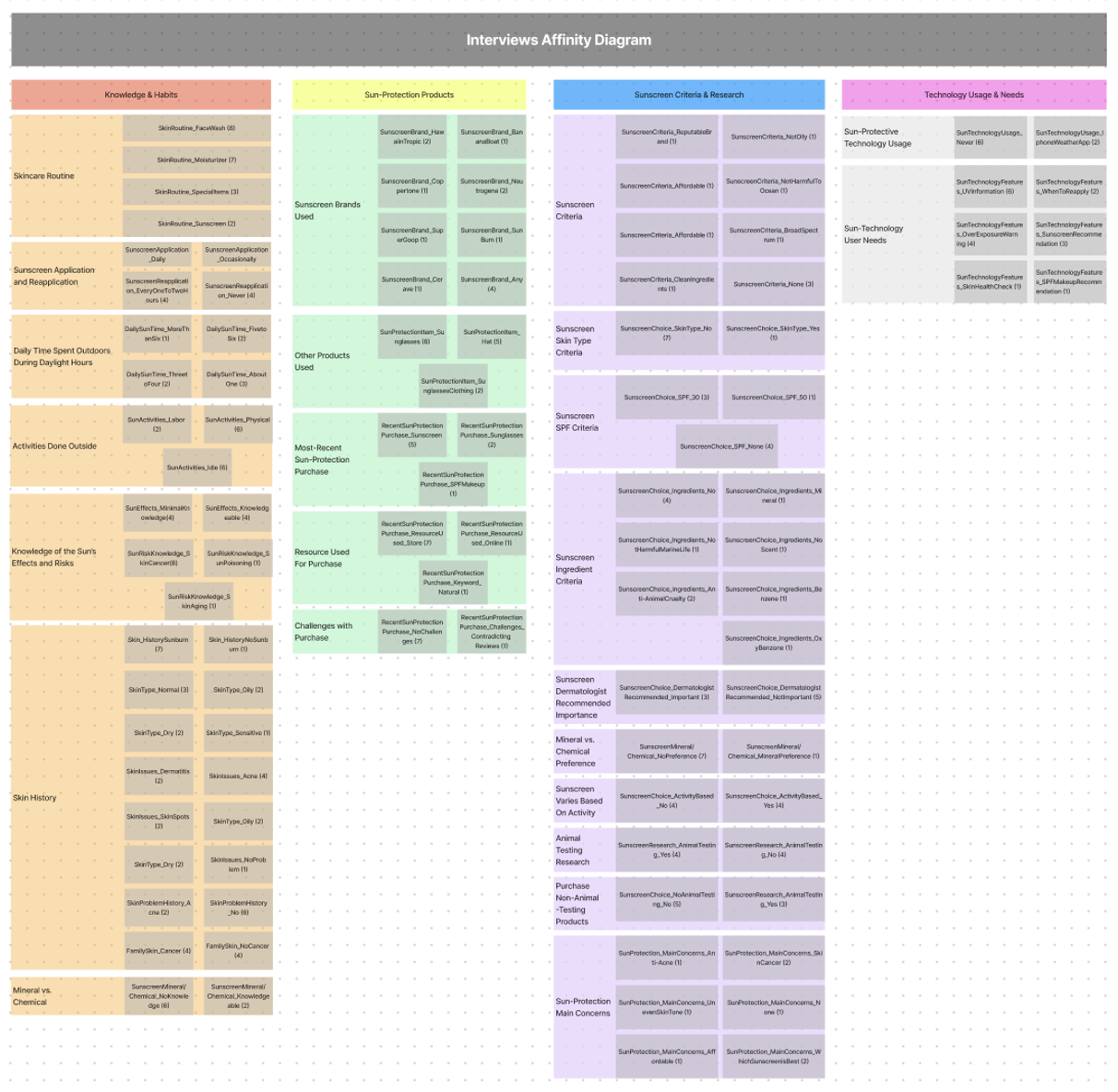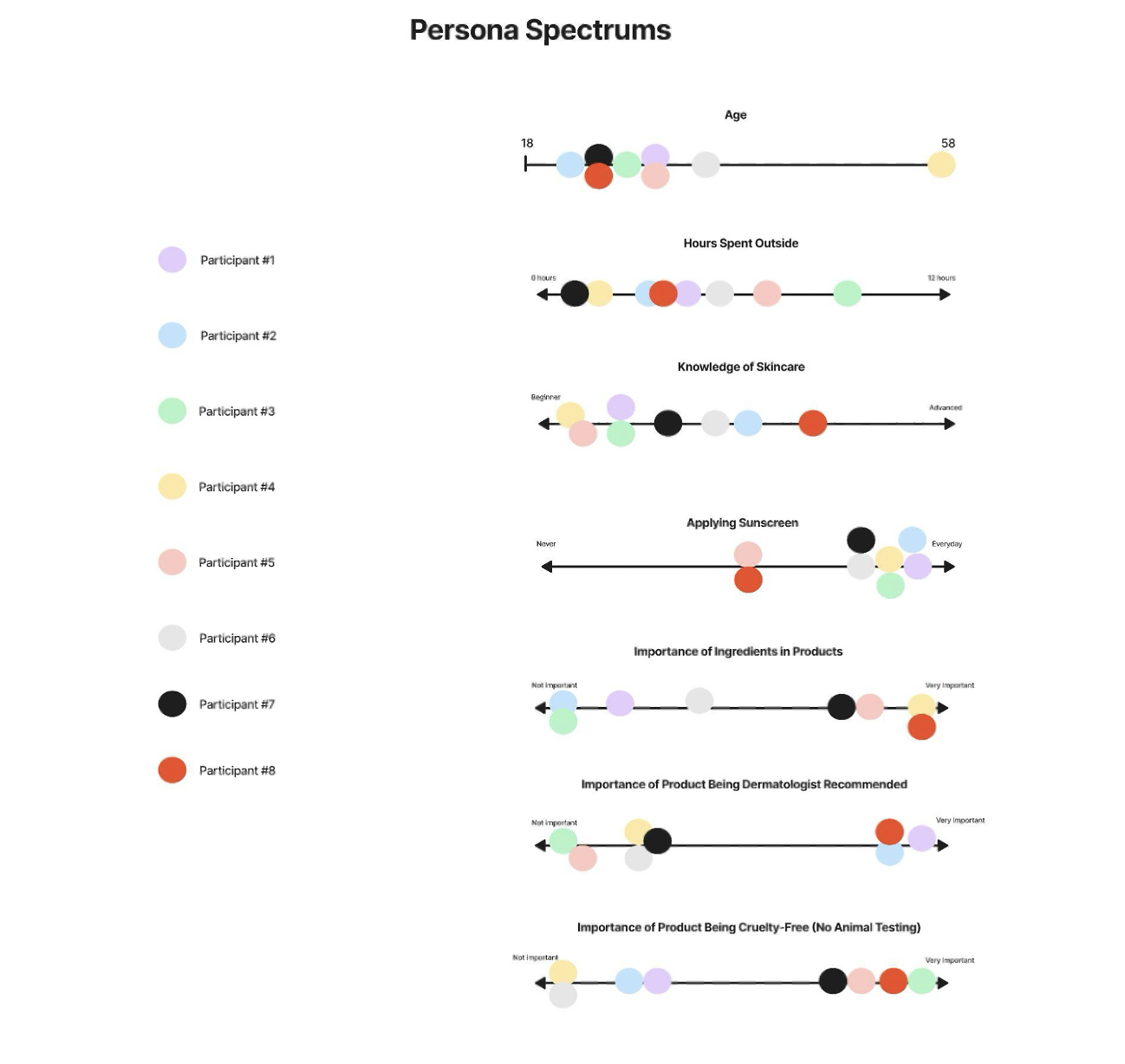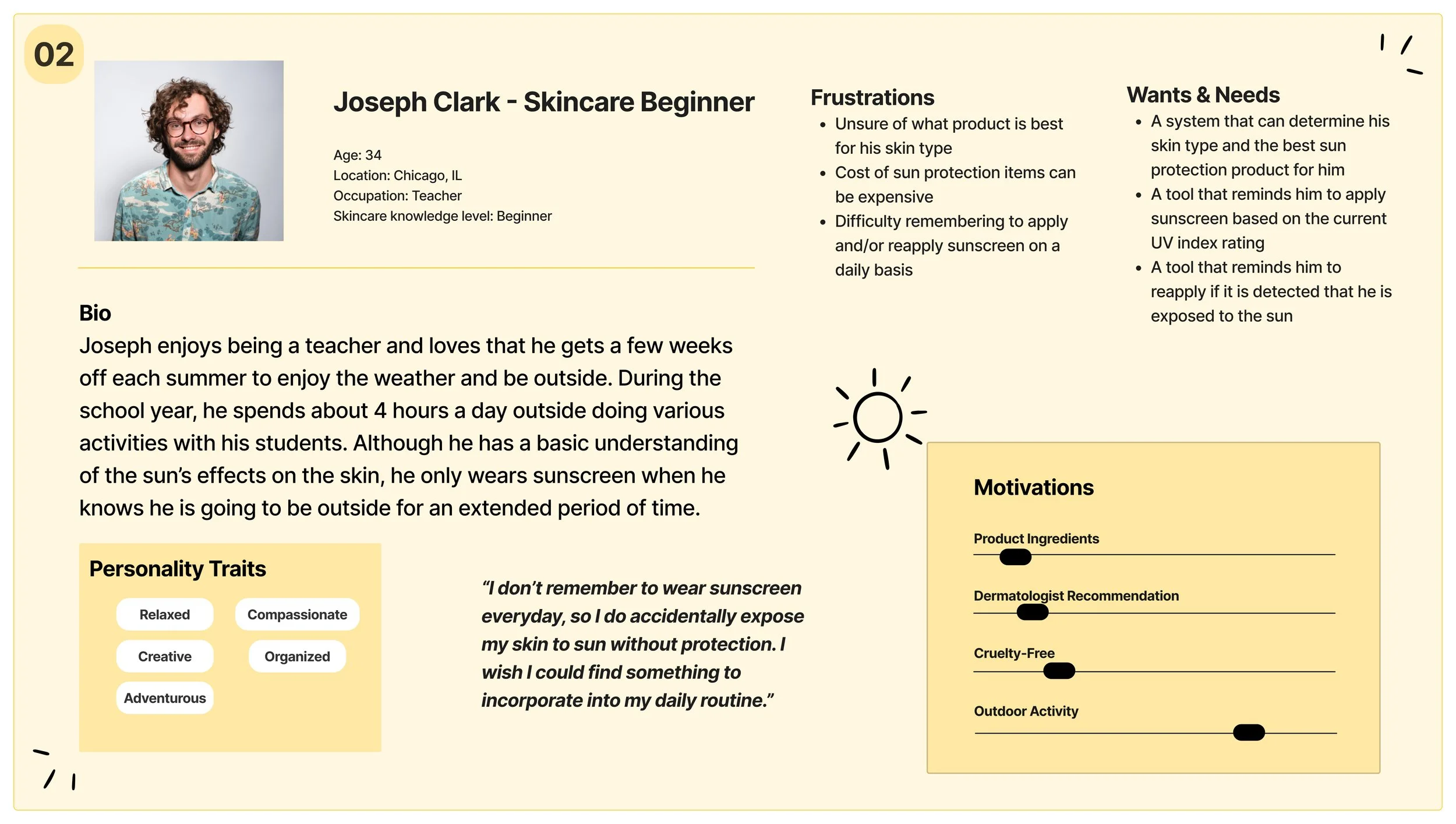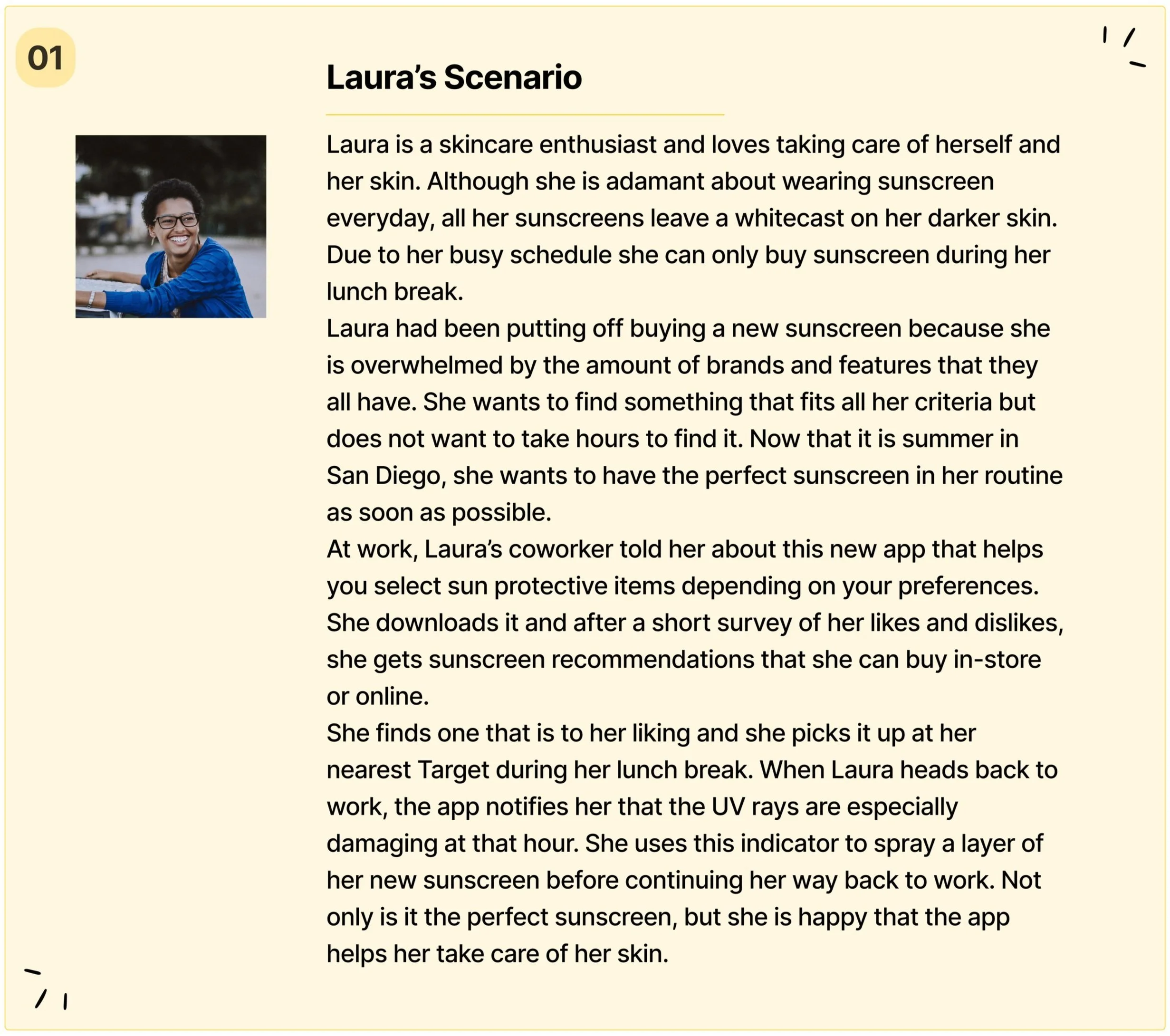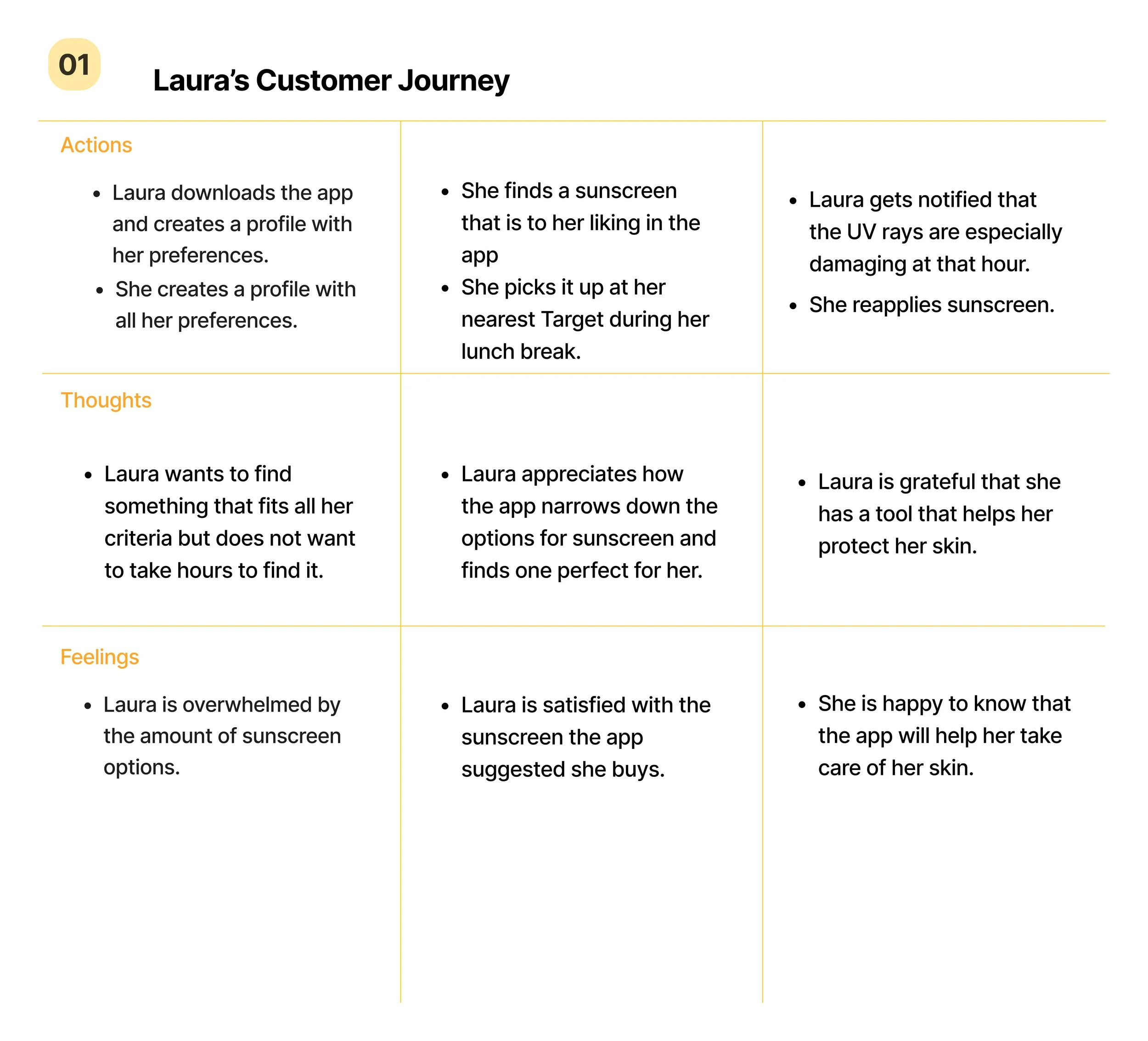Skin Health in the Sun
A UX Research Study to Encourage Better Skincare Practices
ROLE
UX Researcher
TOOLS
Figma, Atlas.ti, Miro
Overview
TIMELINE
March 2023 - June 2023 (10 weeks)
Problem
Excessive amounts of UV radiation exposure may cause skin cancer*, premature aging, skin damage, immune system suppression, and eye damage. People need to protect their skin every day to reduce the risk of excessive sun exposure**
*American Cancer Society, 2023. **EPA (United States Environmental Protection Agency)
In our observation study, we gathered information on participants' backgrounds, skincare knowledge, and sunscreen habits. We then presented them with a scenario where they imagined hiking with four friends in the summer and engaging in a conversation about sunscreen and skincare. These friends had diverse skin types and concerns, including a family history of skin cancer, different skin types, and varying skin tones. Participants shared their screen to demonstrate how they would help themselves and their friends practice better skincare in the sun.
Research Question
How can a technology-based solution help individuals from being overexposed to the sun?
Research and Analysis
OBSERVATIONS
Affinity diagram of observation findings
Observation sequence diagram
After the observations, we interviewed eight participants with questions that covered topics such as participants' skin type/skin concerns, skincare routines, daily sun exposure, sunscreen use, knowledge of sun protection, and sun protection usage. Warm-up questions about skincare and sunscreen habits were followed by deep focus questions regarding skincare usage and knowledge, sun-protection product purchases and research, sun technology usage, and retrospective queries about desired features in a technology-based solution and main concerns with sun overexposure.
INTERVIEWS
Affinity diagram of interview findings
Findings and Implications for Design
We identified four major themes from our findings that provided valuable insights for potential design solutions to our problem. These themes emerged through a thorough analysis of our data, highlighting key patterns and trends that were consistent across participants.
Our observations and interviews revealed minimal knowledge among participants about sun's effects on the skin and risks from sun overexposure.
Participants showed varied sunscreen application frequency, with seven either occasionally or never applying sunscreen.
1. Knowledge and Habits
Design Solution
Our solution aims to educate users about sun overexposure risks and promote better skincare habits through informative content and reminders for sunscreen application.
2. Sun-Protection Products Search Queries and Research
Participants used search engines with specific keywords like “best” and “tips” related to sun-protection, but encountered irrelevant results.
Six participants in observations and seven in interviews did not research sun-protective products prior to selecting one that met their criteria.
Design Solution
Our solution includes a sun-protection product database aligning with user search keywords and using an algorithm to suggest products based on their history and preferences.
In interviews, participants' product selection criteria varied in importance, including factors like price, ingredients, and no animal testing.
Participants often considered credibility indicators like dermatologist recommendations, reputable medical sources, and positive reviews when selecting products or articles.
3. Product and Source Criteria
Design Solution
Our solution should offer users filter options based on their product criteria and rankings of reliable sources aligning with key search criteria for informed decision-making.
4. Problem Solving Strategies and Technological Solutions
Participants in observations used various methods to help fictional friends with sun protection, such as sharing product or article links, directly sharing search-query information, and reminding friends to apply sunscreen.
Interview participants shared desired features for a sun-protection tech solution, including UV index data, overexposure alerts, and personalized sunscreen recommendations.
Design Solution
Our solution will offer a personalized skincare plan for sun protection and feature an alert system for UV index and prolonged exposure, providing tailored recommendations for skincare practices and sunscreen based on the current UV level.
Personas
From interview data, we created seven persona spectrums including age, skincare knowledge, sunscreen application frequency, time spent outdoors, and factors influencing product purchase decisions like ingredients, dermatologist recommendations, and animal testing concerns, leading to the development of two personas representing our diverse user needs.
Persona Spectrums
Persona 1: Laura
Persona 2: Joseph
Scenarios
We crafted tailored scenarios for each of the two personas by considering their unique desires and requirements, addressing their specific wants and needs in a way that was meaningful and impactful.
Our team mapped out a journey for each persona's scenario, detailing their interactions and experiences from start to finish. This allowed us to understand their needs, pain points, and moments of delight throughout the process.
Customer Journeys
Priority Matrix
The priority matrix ranks the various features for our proposed technological solution and takes into account how crucial they are for our two personas.
Limitations
Our participants did not accurately represent the general population, as our age range for the observations and interviews was 23-31.
Potential for bias based on the various interest levels of skincare and sun protection amongst participants
Decision-making process may have been influenced by targeted ads when participants performed tasks
What’s Next?
Expand the sample size and include a wider age range of participants
Wireframing to draft the proposed design
Usability testing of the proposed design solutions to gain useful feedback on the ease of use and effectiveness of the product concept



